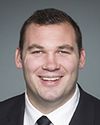Thank you, Mr. Chair, for the opportunity to appear before the committee today.
As you mentioned, I am accompanied by Frank Vermaeten and Gillian Pranke from the agency, who have responsibilities in overseeing the CRA's call centres.
In my first year as commissioner, I can attest to the commitment of CRA's employees to improve services to Canadians, combat tax evasion and aggressive tax avoidance, and provide a fair and equitable administration of Canada's tax and benefits system.
I am here today to speak to you about the Auditor General's Fall 2017 Report concerning the CRA's call centres.
Mr. Chair, the Auditor General recommended that the CRA take action in three areas to address service delivery standards offered by its call centres: improving accessibility; strengthening the quality and accuracy of its responses; and enhancing program measurements and reports.
The agency agrees with the recommendations. We need to do better.
Service to Canadians is at the heart of the agency's mission, and it is a fundamental component of the minister's mandate, as articulated by the Prime Minister.
As requested, Mr. Chair, a copy of our action plan was provided to the committee members in advance for their review and consideration. The action plan identifies how the CRA will implement the Auditor General's recommendations and outlines its approach to support staff development, introduce new technology, and improve its operating systems and processes.
Let me assure you, Mr. Chair, that the staff who work at our call centres across the country, together with their colleagues responsible for information technology and reporting, are committed to implementing this plan. They have demonstrated integrity and innovation in their work to find solutions to improve the services they offer to Canadians, and I'm proud of the work that our employees carry out every day.
An important element of the action plan is to provide additional training and improved tools to these call centre agents to ensure they have the information and tools they need to deliver the services upon which Canadians rely. These improvements will include the introduction of tools to better assess agent readiness and proficiency.
The agency is also in the process of adopting a new and more modern call centre technology platform that will allow us to improve the services we provide to Canadians.
The action plan also identifies how the agency will update its service standards and reporting for call centres. We are committed to being more transparent with Canadians to ensure they know the level of service they can expect from the CRA and how we are performing against those expectations.
In advance of introducing this new technology, the agency has already taken a number of steps to improve and modernize its call centre service during the past year.
We have hired more call centre agents and we have improved our existing systems and processes to enhance Canadians' access to our call centres.
We have extended wait times from two to five minutes to reduce the chance of getting a busy signal, in line with one of the Auditor General's recommendations.
We have expanded the options available to callers through our interactive voice response system, which provides callers with self-serve options if they cannot access an agent immediately. Through these self-serve options, we have reduced the demand on our call centre agents so they can dedicate the time required to assist callers with more complex questions.
As a result of these changes, Canadians have higher success rates when they attempt to access the call centre telephone lines.
Since receiving budget 2016 funding, we have reduced by 50% the chance that a caller will get a busy signal when calling the income tax enquiries line. On average, Canadians will call the CRA approximately twice to speak with an agent, as opposed to four times as at the time of the Auditor General's report. We are now responding to approximately 50% of the calls.
While we know that there is still room for improvement—and we will improve—this represents some progress, which has been met with increased client satisfaction, as indicated by our caller surveys. As we develop increasingly sophisticated methods to provide better services, Canadians can count on the CRA to deliver its programs in a fair and trusted manner.
Last year, the Auditor General reported on the agency's appeals process and noted areas for improvement. We created an action plan to address these issues.
I came before this committee to discuss that plan. I'm pleased to report that we are following through on these commitments and have made progress. Rest assured, Mr. Chair, that CRA will implement the action plan on call centres with the same commitment and determination.
I welcome any questions the committee may have about our responses to the Auditor General’s recommendations or about our action plan. Thank you.










